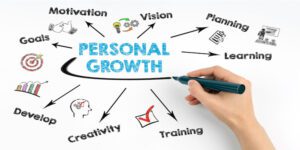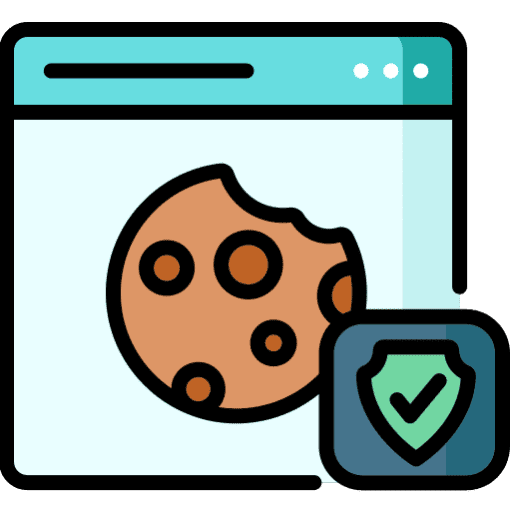La lecture est un élément essentiel de notre vie quotidienne et il est vital de pouvoir lire rapidement et efficacement. Cependant, la vitesse de lecture moyenne de la plupart des gens se situe autour de 200-400 mots par minute (wpm).
Heureusement, grâce aux techniques de lecture rapide, il est possible de doubler ou de tripler cette vitesse sans compromettre la compréhension. Dans cet article, nous allons voir comment vous pouvez améliorer vos compétences en lecture afin de lire plus vite et de retenir plus d'informations.
"Tous les lecteurs ne sont pas des leaders, mais tous les leaders sont des lecteurs.
- Harry S. Truman
Définition de la lecture rapide
La lecture rapide fait référence aux techniques utilisées pour améliorer la vitesse de lecture sans sacrifier la compréhension. Il s'agit d'entraîner les yeux et le cerveau à traiter le texte d'une manière différente des méthodes de lecture traditionnelles. Les lecteurs rapides utilisent différentes méthodes telles que l'utilisation de la vision périphérique, l'élimination de la subvocalisation (prononcer les mots dans sa tête pendant la lecture) ou le regroupement des informations.
Avantages de la lecture rapide
L'un des principaux avantages de la lecture rapide est qu'elle permet de gagner du temps. L'augmentation de la vitesse de lecture s'accompagne d'une augmentation de la productivité, car elle permet de lire plus de documents en moins de temps. Cette compétence peut s'avérer particulièrement utile pour les étudiants qui doivent traiter rapidement de grandes quantités de documents ou pour les professionnels qui doivent lire quotidiennement un grand nombre de courriers électroniques et de rapports.
Un autre avantage de la lecture rapide est qu'elle améliore la compréhension en obligeant les lecteurs à être attentifs et à rester concentrés sur le texte. En apprenant à éliminer les subvocalisations inutiles et les autres mauvaises habitudes qu'ils ont pu prendre avec les méthodes d'apprentissage traditionnelles, les lecteurs retiennent mieux les informations.
Idées reçues sur la lecture rapide
Nombreux sont ceux qui pensent que la lecture rapide consiste à sacrifier la compréhension à la rapidité. D'autres pensent que cela nécessite une formation spécialisée ou une prédisposition génétique. Cependant, il s'agit là d'idées fausses.
La lecture rapide n'implique pas nécessairement de sacrifier la compréhension ; au contraire, elle améliore les deux en éliminant les mauvaises habitudes de lecture et en utilisant de nouvelles techniques qui aident les lecteurs à rester concentrés sur le texte. Si certaines personnes lisent naturellement plus vite que d'autres, tout le monde peut apprendre à lire plus vite avec les bons outils et les bonnes techniques.
La lecture rapide est une compétence qui s'apprend et qui présente de nombreux avantages, tant pour les étudiants que pour les professionnels. Elle ne nécessite pas de formation spécialisée ni de talent inné.
Il s'agit plutôt d'apprendre de nouvelles techniques qui permettent d'améliorer la vitesse de lecture sans sacrifier la compréhension. Dans les sections suivantes de cet article, nous explorerons ces techniques plus en détail.

La science de la lecture
Le cerveau joue un rôle important dans la façon dont nous apprenons à lire et à traiter l'information. Découvrons la science qui sous-tend la façon dont notre cerveau comprend le langage et comment nous pouvons utiliser ces connaissances pour devenir de meilleurs lecteurs.
Comment le cerveau traite l'information pendant la lecture
La lecture est un processus cognitif complexe qui nécessite la coordination de nombreuses régions du cerveau. Lorsque nous lisons, nos yeux parcourent le texte et envoient des informations visuelles au cortex visuel primaire situé à l'arrière du cerveau. De là, ces informations visuelles sont transmises à d'autres régions du cerveau responsables du traitement du langage, telles que les aires de Broca et de Wernicke.
Ces régions nous aident à reconnaître les mots et à leur donner un sens. Outre le traitement du langage, nous utilisons également notre mémoire de travail lorsque nous lisons.
La mémoire de travail est nécessaire pour garder les informations à l'esprit tout en effectuant des tâches mentales telles que la compréhension et l'analyse. La lecture fait appel à des fonctions exécutives telles que le contrôle de l'attention, l'inhibition des stimuli distrayants et la flexibilité cognitive, qui sont importantes pour une compréhension efficace de la lecture.
Facteurs influençant la vitesse de lecture et la compréhension
Plusieurs facteurs peuvent influer sur la capacité d'un individu à lire rapidement avec un taux de compréhension élevé. L'un de ces facteurs est le vocabulaire : les lecteurs qui ont un vocabulaire plus étendu ont tendance à lire plus rapidement parce qu'ils n'ont pas à s'arrêter aussi souvent pour chercher des mots inconnus ou se débattre avec une syntaxe peu familière. Un autre facteur est la connaissance du contexte : ceux qui ont plus de connaissances préalables sur un sujet ont tendance à lire plus vite parce qu'ils peuvent facilement contextualiser les nouvelles informations.
Parmi les autres facteurs, on peut citer les problèmes de santé physique, comme les troubles de la vision ou la dyslexie, qui peuvent ralentir la vitesse à laquelle une personne peut lire efficacement. Les facteurs environnementaux tels que les conditions d'éclairage ou les niveaux de bruit peuvent également avoir un impact sur la vitesse de lecture et la compréhension.
Techniques pour améliorer la vitesse de lecture et la compréhension
Il existe plusieurs techniques permettant d'améliorer la vitesse de lecture sans sacrifier la compréhension du texte : Tout d'abord, c'est en forgeant qu'on devient forgeron !
En lisant régulièrement, vous vous familiarisez avec les mots, les concepts et la syntaxe, ce qui vous permet de vous souvenir plus rapidement des mots et de les reconnaître plus vite. Deuxièmement, la sub-vocalisation - le fait de prononcer les mots dans votre tête pendant que vous les lisez - peut ralentir considérablement votre vitesse de lecture.
L'élimination de la sub-vocalisation et l'entraînement à la lecture sans vocaliser les mots peuvent contribuer à améliorer la vitesse de lecture. Troisièmement, l'utilisation de la vision périphérique pour saisir des lignes entières de texte en une seule fois permet de réduire le mouvement des yeux et d'augmenter la quantité d'informations traitées par fixation oculaire.
Le découpage de grandes parties de texte en segments plus petits peut également aider les lecteurs à mieux retenir les informations tout en parcourant les passages plus rapidement. Prendre des notes pendant la lecture est une technique éprouvée pour améliorer la compréhension et la mémorisation, car elle fait appel à plusieurs modalités (visuelles et kinesthésiques) pour traiter l'information.
Stratégies de pré-lecture
La lecture rapide ne consiste pas seulement à lire rapidement, mais aussi à comprendre le matériel. Les stratégies de pré-lecture peuvent aider à atteindre cet objectif en fixant un but à la lecture, en prévoyant le matériel, en écrémant et en balayant les informations clés.
Fixer un but à la lecture
Avant de se plonger dans une lecture, il est important de se fixer un but ou un objectif. Posez-vous la question suivante : "Pourquoi est-ce que je lis cela ?" La réponse peut être pour obtenir des informations, résoudre un problème ou simplement se divertir. Une fois que vous avez identifié votre objectif, vous pouvez aborder le texte avec intention et concentration.
Si vous avez du mal à identifier un objectif ou si vous constatez que le texte ne correspond pas à vos intérêts ou à vos objectifs, envisagez de l'abandonner. Tous les documents ne valent pas la peine qu'on y consacre du temps et des efforts.
Prévisualisation du matériel
La prévisualisation consiste à parcourir rapidement des sections du texte pour se faire une idée de sa structure et de son contenu. Cela peut aider à la compréhension en donnant un aperçu de ce que l'on s'apprête à lire.
Pour une prévisualisation efficace, commencez par examiner les titres et les sous-titres. Ils vous donneront une idée du contenu de chaque section.
Ensuite, notez les mots ou les phrases en gras, car ils indiquent souvent des concepts ou des définitions importants. Si le texte contient des éléments visuels tels que des graphiques ou des images, prenez le temps de les regarder car ils fournissent également un contexte précieux qui peut améliorer la compréhension.
Ecrémage et balayage
L'écrémage consiste à parcourir rapidement de grandes parties d'un texte sans nécessairement essayer d'en comprendre chaque mot. C'est utile pour se faire une idée générale du contenu d'un texte sans se perdre dans les détails.
Pour une lecture rapide et efficace, commencez par lire la première et la dernière phrase de chaque paragraphe. Cela permet d'avoir une idée générale du sujet traité.
En outre, faites attention aux mots ou aux phrases mis en évidence, car ils peuvent vous aider à identifier des idées ou des concepts importants. Le balayage consiste à rechercher des informations spécifiques dans un texte.
Cette fonction est utile pour trouver un élément d'information particulier sans avoir à lire l'intégralité du texte. Pour une recherche efficace, commencez par identifier les mots-clés liés à ce que vous recherchez.
Ensuite, recherchez rapidement ces mots-clés dans le texte. Si vous ne les trouvez pas tout de suite, essayez de reformuler vos termes de recherche jusqu'à ce que vous trouviez ce dont vous avez besoin.
Les stratégies de pré-lecture sont un élément essentiel de la lecture rapide, car elles permettent aux lecteurs de comprendre le matériel avant de s'y plonger sérieusement. En se fixant un objectif, en prévoyant le matériel, en survolant et en balayant les informations clés, les lecteurs peuvent plus facilement comprendre et retenir les informations tout en lisant rapidement.

Pendant les stratégies de lecture
Pour commencer à intégrer la lecture rapide dans votre routine de lecture, voici les techniques les plus efficaces utilisées par les maîtres du métier.
Élimination de la subvocalisation
La subvocalisation est l'habitude de prononcer les mots dans votre esprit pendant que vous lisez. Bien qu'il s'agisse d'une habitude naturelle et courante, elle peut ralentir considérablement la vitesse de lecture.
L'un des moyens d'éliminer la subvocalisation consiste à s'entraîner à lire sans bouger les lèvres ou la voix intérieure. Cette technique appelée "lecture silencieuse" entraîne le cerveau à traiter l'information directement, sans retard dû à une verbalisation inutile.
Une autre approche consiste à utiliser un bruit blanc ou une musique de fond pour distraire votre voix intérieure et vous concentrer sur le texte. Une étude publiée en 2016 dans la revue Psychology of Music a montré que l'écoute d'une musique de fond pendant la lecture permettait d'accélérer le temps de lecture, d'augmenter la concentration et d'améliorer la compréhension.
Utilisation de la vision périphérique
La vision périphérique désigne la capacité de notre vue à capter les objets situés en dehors de notre ligne de mire directe. L'utilisation de la vision périphérique peut être un outil puissant pour la lecture rapide, car elle permet de saisir plus d'informations à chaque mouvement de l'œil.
Pour appliquer cette technique à la lecture rapide, essayez d'élargir votre champ de vision au lieu de vous concentrer sur chaque mot individuellement en gardant un regard doux vers le centre de chaque ligne, juste au-dessus de l'endroit où la plupart des gens regardent lorsqu'ils lisent. Au fur et à mesure que vous vous habituez, augmentez votre vitesse en passant d'un paragraphe ou d'une section de page à l'autre sans perdre de vue ce que vous êtes en train de lire.
Regroupement des informations
Le découpage consiste à diviser les textes longs en petits morceaux qui sont plus faciles à traiter efficacement par le cerveau. Elle nous permet de regrouper des concepts ou des idées connexes, ce qui nous aide à retenir plus d'informations avec moins d'efforts. Pour commencer à découper efficacement un texte en lecture rapide, identifiez les idées principales d'un paragraphe et mettez-les en évidence en les soulignant ou en utilisant des couleurs différentes.
Regroupez ensuite ces phrases surlignées en concepts principaux et assurez-vous qu'elles sont reliées logiquement. Cette technique peut vous aider à retenir plus d'informations en capturant les idées clés d'un texte particulier.
Stratégies post-lecture
La lecture est un processus complexe qui implique non seulement le décodage des mots, mais aussi la compréhension et la synthèse des informations. Une fois que vous avez fini de lire, il est important de consolider votre compréhension du matériel en revoyant les points clés, en prenant des notes de manière efficace et en pratiquant le rappel actif. Ces stratégies post-lecture vous aideront à retenir les informations et à améliorer votre compréhension globale.
Révision des points clés
Un moyen efficace de revoir les points clés est de résumer ce que vous avez lu avec vos propres mots. Vous pouvez le faire par écrit ou oralement.
En résumant les idées principales d'un texte, vous vous forcez à synthétiser l'information et à l'organiser d'une manière qui vous semble logique. Une autre stratégie pour revoir les points clés consiste à utiliser des organisateurs graphiques tels que des cartes conceptuelles ou des cartes heuristiques.
Ces outils vous permettent de représenter visuellement les relations entre les différentes idées et les différents concepts d'un texte. En créant une représentation visuelle du matériel, vous pouvez mieux comprendre comment les différents éléments d'information s'imbriquent les uns dans les autres.
Enfin, envisagez de discuter de ce que vous avez appris avec d'autres personnes. En discutant avec d'autres personnes de ce que vous avez lu, vous pouvez consolider votre compréhension de la matière et acquérir de nouvelles perspectives.
Prendre des notes efficacement
La prise de notes est une compétence essentielle pour tout lecteur qui souhaite retenir les informations de ses lectures. Sans prendre de notes, il est facile d'oublier des détails importants ou de perdre le fil des idées au fil du temps.
Lorsque vous prenez des notes, veillez à ce qu'elles soient organisées et faciles à lire ultérieurement. Utilisez des puces ou des listes numérotées pour plus de clarté et veillez à ce que chaque note renvoie directement aux idées principales présentées dans le texte.
Une autre technique pour une prise de notes efficace consiste à utiliser des symboles ou des abréviations pour les mots ou les phrases couramment utilisés. Cela permet de gagner du temps et de garder des notes concises.
Pratiquer le rappel actif
Le rappel actif est le processus qui consiste à se remémorer des informations sans aucune incitation ou indice. Il s'agit de récupérer des informations déjà apprises et de les ramener au premier plan de l'esprit.
L'utilisation de flashcards est un moyen efficace de pratiquer le rappel actif. Créez un jeu de flashcards avec les questions d'un côté et les réponses de l'autre.
Testez-vous régulièrement pour vous assurer que vous retenez les informations clés de vos lectures. Une autre technique pour pratiquer la mémorisation active consiste à utiliser la méthode de la "répétition espacée".
Il s'agit de réviser la matière à des intervalles de plus en plus espacés afin d'améliorer la rétention à long terme. En espaçant vos sessions de révision, vous avez plus de chances de vous souvenir de l'information sur une période plus longue.
Outils et ressources pour la lecture rapide
Cours et programmes en ligne
Si vous souhaitez vraiment améliorer votre vitesse de lecture, suivre un cours de lecture rapide en ligne peut être une excellente option. Il existe de nombreux cours en ligne qui promettent de vous aider à augmenter votre vitesse de lecture, à améliorer votre compréhension et à réduire la subvocalisation. Parmi les options les plus populaires, citons le cours en ligne Iris Reading, Les grands cours : Comment devenir un étudiant hors pairet 7 Lecture rapide.
Ces cours offrent des expériences d'apprentissage personnalisées qui répondent aux besoins des différents apprenants. Opter pour un cours en ligne peut être avantageux si vous préférez apprendre à votre rythme ou si vous avez un emploi du temps chargé.
Applications de lecture rapide
À l'ère du numérique, il existe plusieurs applications qui permettent d'améliorer la vitesse de lecture en déplacement. L'une de ces applications est "Enounce MySpeed", qui permet aux utilisateurs d'ajuster la vitesse de lecture de tout contenu vidéo ou audio qu'ils souhaitent regarder ou écouter.
Cet outil peut s'avérer particulièrement utile pour les étudiants qui souhaitent regarder des cours enregistrés à un rythme plus rapide que la normale. Une autre application populaire est "AceReader", qui propose divers exercices permettant aux utilisateurs d'améliorer leurs mouvements oculaires et leur vision périphérique lorsqu'ils lisent.
Aides à la lecture comme Spritz, Spreeder, etc.
Les aides à la lecture telles que Spritz et Spreeder ont gagné en popularité ces dernières années, car elles permettent aux utilisateurs de lire un texte à une vitesse extrêmement rapide sans avoir à déplacer leurs yeux sur la page. Ces outils fonctionnent en affichant un mot à la fois sur l'écran, en succession rapide, à l'aide de différentes techniques telles que la présentation visuelle en série rapide (RSVP).
Cette méthode permet d'augmenter la vitesse de lecture en réduisant le temps de mouvement des yeux tout en améliorant les taux de compréhension grâce à l'attention portée à chaque mot affiché à l'écran. Dans l'ensemble, ces outils peuvent s'avérer très efficaces lorsqu'ils sont utilisés de manière cohérente au fil du temps, parallèlement à d'autres stratégies mentionnées plus haut dans cet article, telles que la prévisualisation du matériel, l'élimination de la subvocalisation et l'utilisation de la vision périphérique.
Il est essentiel de noter que si ces outils peuvent certainement vous aider à améliorer votre vitesse de lecture, il est également crucial de maintenir un bon niveau de compréhension. L'objectif doit toujours être de comprendre la matière plutôt que de la terminer rapidement.
Défis courants en matière de lecture rapide
La lecture est un processus complexe qui requiert de l'attention, de la concentration et le souci du détail. Lorsqu'il s'agit de lecture rapide, les lecteurs sont souvent confrontés à des difficultés.
Ces défis peuvent rendre difficile le maintien du rythme requis pour la lecture rapide et peuvent également affecter la compréhension. Examinons quelques-unes de ces difficultés.
Maintenir le cap
L'un des plus grands défis de la lecture rapide est de rester concentré. Lorsque vous lisez rapidement, les distractions peuvent facilement faire dérailler vos progrès. Pour éviter les distractions, créez un espace calme où vous ne serez pas interrompu.
Éteignez votre téléphone et réduisez au minimum les autres distractions potentielles telles que les notifications de courrier électronique ou les alertes des médias sociaux. Un autre moyen de rester concentré est de se fixer des objectifs spécifiques pour chaque séance de lecture.
Par exemple, si vous lisez à des fins de recherche, fixez-vous pour objectif de trouver trois éléments d'information clés dans chaque article ou livre que vous lisez. Cela vous aidera à vous concentrer sur la tâche à accomplir.
Trouver un rythme confortable
Un autre défi de la lecture rapide est de trouver un rythme confortable qui vous convienne. Chacun lit à un rythme différent, et ce qui fonctionne pour une personne peut ne pas fonctionner pour une autre. Il est important de trouver un rythme qui vous permette de lire rapidement mais aussi de comprendre.
L'un des moyens de trouver votre rythme optimal consiste à vous entraîner avec différents types de documents à différentes vitesses jusqu'à ce que vous trouviez le juste milieu entre vitesse et compréhension. Vous devrez peut-être ralentir votre rythme lorsque vous lisez des documents techniques ou des manuels denses, mais vous pouvez augmenter votre vitesse lorsque vous lisez des documents plus légers, comme des romans ou des articles de presse.
Développer de bonnes habitudes
La lecture rapide exige de la discipline et de bonnes habitudes, tout comme n'importe quelle autre compétence. Une habitude qui peut aider à la fois la concentration et le rythme est de faire des pauses pendant les longues sessions de lecture ; cette pratique donne à votre cerveau le temps de se reposer avant de reprendre.
Une autre bonne habitude consiste à revoir les points clés après chaque section de lecture. Cela vous aidera à retenir les informations et à améliorer votre compréhension.
Évitez les habitudes qui nuisent à votre concentration, comme le fait d'effectuer plusieurs tâches à la fois, de lire dans un environnement où la musique est forte ou la télévision bruyante, ou d'essayer de lire lorsque vous êtes fatigué ou distrait. En prenant de bonnes habitudes et en évitant les mauvaises, vous pouvez faire en sorte que la lecture rapide devienne une partie intégrante de votre routine plutôt qu'un problème.
Conclusion : Conseils pour une lecture rapide réussie
Fixer des objectifs réalistes
Pour devenir un lecteur rapide efficace, il est important de se fixer des objectifs réalistes. Commencez par évaluer votre vitesse de lecture et votre niveau de compréhension actuels, puis déterminez vos objectifs. Il est essentiel de préciser vos objectifs et de les rendre mesurables.
Par exemple, vous pourriez vous fixer comme objectif d'augmenter votre vitesse de lecture de 50 mots par minute en l'espace de deux semaines. Des objectifs spécifiques et réalisables augmentent les chances de réussite.
Pratiquer régulièrement
Pour améliorer vos compétences en lecture rapide, vous devez vous entraîner régulièrement. Il est important de réserver du temps chaque jour ou chaque semaine pour des séances d'entraînement ciblées.
Au cours de ces séances, utilisez les techniques que vous avez apprises et suivez vos progrès par rapport à vos objectifs. Il peut s'avérer utile de diviser vos séances d'entraînement en plusieurs petites parties tout au long de la journée, car cela peut vous aider à rester concentré.
Se rappeler que la compréhension est essentielle
Bien que l'augmentation de la vitesse de lecture soit souvent l'objectif principal de la lecture rapide, il est important de se rappeler que la compréhension ne doit pas être sacrifiée à la recherche de temps de lecture plus rapides. Pour améliorer la compréhension tout en augmentant la vitesse de lecture, envisagez d'utiliser des techniques telles que le rappel actif ou la prise de notes pendant la lecture.
N'oubliez pas que l'apprentissage de nouvelles informations n'est utile que si elles peuvent être mémorisées et appliquées plus tard. Pour réussir à lire rapidement, il faut se fixer des objectifs réalistes, s'entraîner régulièrement et se rappeler que la compréhension doit toujours primer.
Il convient de noter que la maîtrise de ces compétences prend du temps. Ne vous découragez donc pas si les progrès sont lents au début - avec des efforts constants, vous obtiendrez des résultats au fil du temps ! En appliquant ces conseils dans la vie quotidienne - y compris en s'exerçant régulièrement - les lecteurs verront leurs capacités s'améliorer au fil du temps !
Si vous êtes passé maître dans l'art de la lecture rapide, n'hésitez pas à nous faire part de vos conseils et de vos stratégies dans les commentaires ci-dessous ! Nous serions ravis de vous entendre.

















